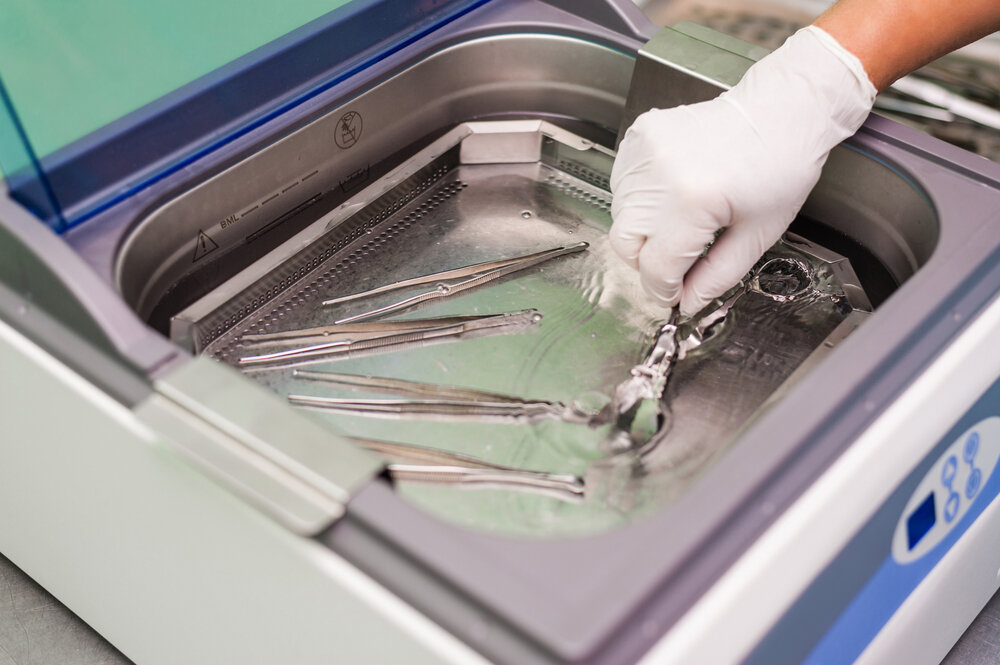Why the Sterilization Process Requires an Ultrasonic Cleaner
Cross-contamination is a real issue, and every precaution must be taken!
An instrument that is dirty cannot be properly sterilized without an ultrasonic cleaner. If you were to place a dirty instrument in a sterilizer without first cleaning it then the risk factor is still present due to bacteria and viruses that is shielded by the soil on the surface of the instrument. A sterilizer doesn’t clean an instrument it only sterilizes it.
The respect for each other’s health is crucial, so this is not only in consideration of patients but of your co-workers as well. The use of an Ultrasonic Cleaner for a better sterilization process is a simple and effective way to achieve that goal.
Many states require or recommend the use of Ultrasonic Cleaning in any facility that would normally use a sterilization process. With the higher than ever risk of infectious diseases spreading, the old standard of sterilization may not be good enough.
Read About: How to Drain the Water on Your Tuttnauer Sterilizer
What does Ultrasonic Cleaning Do?
Ultrasonic Cleaning is a cavitation process where bubbles are agitated through high-frequency sound waves to penetrate every surface of medical instruments including holes and recesses.
Medical instruments with surfaces of Metal, Ceramic, Plastic, Rubber, Glass can be used in this cleaning process. Utensils ranging from surgical and dental tools to manicure & pedicure implements are subject to biological impurities, rust or even dust.
What Kind of Solution is used for Ultrasonic Cleaning?
Use a neutral pH ultrasonic cleaner solution in your unit for best results. Low pH solutions can cause corrosion. Keep in mind, this process is to clean, not sterilize.
TIP: You can hand wash implements to rid any noticeable debris before placing in Ultrasonic Cleaner for an extra precaution to ensure perfect cleaning.
Do I need an Ultrasonic Cleaner as well as an Autoclave?
Absolutely! Once the Ultrasonic Cleaning process has been completed, the instruments are then dried and placed into your sterilizer where they will then go through the disinfectant process. Ultrasonic Cleaning is a special process that prepares your instruments for the sterilization process to ensure all surfaces are contaminant free. Typically implements do not have to be disassembled when using this sterilization process.
Read About: Are You in Compliance with Joint Commission's Sterilizer Requirements
How Can I Be Sure My Ultrasonic Cleaner is Working Properly?
This simple test using a piece of aluminum foil will tell you if your cleaner is up to standard.
Cut a section of aluminum foil the size of your ultrasonic tank
Place the aluminum foil in the liquid, but not touching the bottom
After a duration of about 30 seconds, you should see s consistent perforated pattern in the aluminum foil. If the pattern is not consistent, call for service.
Perform this test first thing in the day, and be sure to change the liquid as the foil can leave contaminates.
If you are ever unsure about something with your device or you need a sterilizer repair service at your site, please don’t hesitate to call the Medicanix team to assist you!
Toll Free landline number: 800-937-3724

